Sustainable home design is more important than ever, and incorporating eco-friendly materials and techniques into your building project can significantly impact the environment.
Not only are you reducing waste, but you’re also contributing towards a healthier planet. If you’re considering remodelling or starting from scratch with a new build, think green first! In this blog post, we’ll explore some of the top materials and methods for sustainable home design and construction so that your project can boast positive environmental credentials.
What is Sustainable Home Design?
Sustainable home design has become increasingly popular as we become more aware of human activity’s impact on the planet. Sustainable home design involves creating living spaces with minimal environmental impact while providing inhabitants with a comfortable and functional space.
This can include using eco-friendly building materials, maximizing natural light and ventilation, implementing energy-saving technologies such as solar panels, and even incorporating greenery and outdoor spaces into the design.
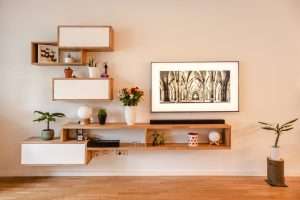
By prioritizing sustainability, we can create homes that benefit the planet and provide a healthier and more enjoyable living experience. Whether renovating an existing home or building from scratch, sustainable home design offers endless possibilities for creating a beautiful and environmentally conscious space.
The Importance of Sustainable Home Design
Reduced Carbon Footprint
Carbon Footprint is a term used to describe the amount of carbon dioxide that a person, an organization, or an activity emits into the atmosphere. Buildings, especially homes, are a major source of carbon footprint.
Sustainable home design reduces the carbon footprint by reducing energy consumption and using renewable energy sources like solar, wind, and geothermal. Using energy-efficient appliances, insulation, and efficient lighting significantly reduces the carbon footprint.
Energy Efficiency
A sustainable home is designed to be energy efficient. This means that the energy required to run the house is minimal. A well-insulated home will keep the warm air inside during winter and keep the cool air inside during summer.
A home designed with passive solar can reduce heating and cooling costs by as much as 80%. Incorporating renewable energy like solar panels can also significantly reduce energy bills.
Health Benefits
Sustainable home design promotes a healthy indoor environment as well. This is achieved by using natural materials that do not produce harmful toxins, natural ventilation, and low-VOC (volatile organic compound) materials that do not emit harmful fumes. The use of natural light is also promoted, as it is known to have health benefits like improving mood, reducing stress, and providing the necessary vitamins that the body needs.
Cost-Effective
Many people believe sustainable homes cost more to build, but they can be more cost-effective in the long term. Considering the reduced energy bills, water-saving features, and low maintenance costs, they can be a more affordable option for homeowners. Many buyers also prefer sustainable homes, making them more desirable in the real estate market.
Aiding Climate Change
Climate Change poses a worldwide challenge that touches all of our lives. Embracing sustainable home design is an impactful way we can individually contribute to mitigating these effects by lessening our carbon footprint. Such homes are known to be highly efficient in terms of energy and water use, compared to their conventional counterparts. This not only helps preserve our natural resources but also fosters a healthier and more harmonious living environment.

Eco-Friendly Materials for Home Design
Bamboo
Bamboo is a highly sustainable and eco-friendly material that can be used in home design. It’s known for its fast growth rate, which means it can be harvested quickly without depleting natural resources. Bamboo can be used in various ways, such as flooring, furniture, and even as a decorative element. It’s also highly durable and water-resistant, perfecting for high-moisture areas such as bathrooms and kitchens.
Reclaimed Wood
Reclaimed wood is an excellent choice if you’re looking for eco-friendly materials for your home design. Reclaimed wood is salvaged from old buildings, factories, or homes and repurposed for new projects. Not only does this reduce waste, but it also adds character and uniqueness to your home. Reclaimed wood can be used for furniture, flooring, and even walls. It’s also highly durable and has a naturally aged look that many people find appealing.
Recycled Glass
Recycled glass is a versatile and eco-friendly material that can be used in various ways in home design. It’s made from post-consumer or industrial waste, such as bottles or scraps from manufacturing plants. Recycled glass can be used for countertops, backsplashes, and even as a decorative element in lighting fixtures. It’s also highly durable and easy to maintain.
Cork
Cork is a renewable and sustainable material that’s perfect for home design. It’s made from the bark of cork oak trees, which can be harvested every nine years without damaging the tree. Cork can be used in flooring, wall tiles, and even insulation. It’s also water-resistant, hypoallergenic, and helps to reduce noise.
Hempcrete
Hempcrete is a relatively new eco-friendly material that’s becoming popular in home design. It’s made from a mixture of hemp and lime, which creates a natural and sustainable building material. Hempcrete is highly insulating and helps regulate the home’s temperature and humidity levels. It’s also fire-resistant and has a low carbon footprint.
Sustainable Home Construction Techniques
Passive Design
Passive design is a sustainable building technique that uses natural resources, such as sunlight and wind, to regulate the temperature of a building. By orienting buildings to take advantage of sunlight and natural ventilation, passive design can reduce the need for heating and cooling systems, ultimately lowering energy consumption and reducing the carbon footprint. This technique also creates a healthier and more comfortable indoor environment by promoting natural airflow and light.
Green Insulation
Insulation is a crucial component of any building project, and choosing the suitable material can significantly impact the project’s sustainability. Fibreglass insulation has been popular for decades but is not always the most sustainable choice. Newer green insulation materials, such as recycled cotton, wool, and soy-based foam, have emerged as sustainable alternatives. These materials are renewable, non-toxic, and have excellent insulating properties. They also create a healthier indoor environment by reducing airborne toxins.
Renewable Energy
Renewable energy, such as solar and wind, has become more affordable and accessible in recent years, making it an attractive addition to sustainable home construction. Installing solar panels or a wind turbine can significantly reduce energy consumption, energy bills, and carbon footprint. In addition, many governments offer incentives and rebates to homeowners who use renewable energy, making it an even more economical option in the long run.
Water Conservation
Conserving water is another crucial aspect of sustainable home construction. Low-flow faucets and showerheads can significantly reduce water usage, rainwater harvesting and greywater recycling systems. Rainwater harvesting involves collecting rainwater from roofs for non-potable purposes, such as watering plants or flushing toilets. In contrast, greywater recycling involves treating and reusing the water from sinks, showers, and washing machines for non-potable use. These systems reduce water usage and can significantly lower water bills.
Sustainable Materials
Choosing sustainable materials, such as reclaimed wood, bamboo, and recycled glass, can also significantly impact the sustainability of a home construction project. By using materials that have been recycled or are renewable, we reduce the carbon footprint and strain on natural resources. In addition, these materials add a unique character to a home and can often be more affordable than traditional materials.
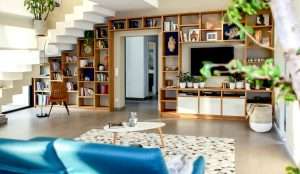
Energy-Efficient Design Strategies
In addition to choosing sustainable materials, energy-efficient design strategies can also help reduce energy consumption and costs. Natural lighting, LED lighting, and programmable thermostats are just a few ways homeowners can save energy. Homeowners can also opt for energy-saving appliances and low-VOC paints to reduce environmental impact.
Sustainable home construction is ultimately about balancing protecting the environment and creating a comfortable and efficient living space. By harnessing modern technologies and investing in eco-friendly materials, homeowners can ensure their homes are environmentally conscious and energy-efficient. Proper planning makes creating beautiful, sustainable homes that will last for generations possible.
Sustainable Home Interior Design Ideas
In addition to building a sustainable home, interior design can be important in creating a green space. Sustainable furniture and accessories, such as floor coverings made from recycled materials or handcrafted items, can help reduce the environmental impact of home decor. Investing in energy-efficient appliances and using low-VOC paints are additional ways to create a sustainable home interior.
Incorporating natural elements, such as potted plants and live greenery, can also help bring nature indoors and reduce energy consumption. Natural light is another great way to make an area look larger, brighter, and more inviting while reducing energy costs. Finally, choosing furniture and accessories made from sustainably-sourced materials, such as bamboo or reclaimed wood, can help create a greener and more comfortable home for years.
Green Landscaping for Sustainable Home Design
Green landscaping is essential to sustainable home design and can contribute to biodiversity in British gardens. By choosing native plants, homeowners can provide habitats for local wildlife, such as birds and butterflies, helping to increase biodiversity. Native species are also well-adapted to the local climate and soil conditions, reducing water usage and maintenance requirements.

In addition, sustainable landscaping involves reducing the use of fertilizers and chemicals to protect local water sources. Homeowners can also opt for green roofing materials, such as sedum mats or recycled plastic membranes, to reduce stormwater runoff and provide additional insulation. Finally, using compost from kitchen scraps or yard waste can help reduce landfill waste and provide valuable nutrients to the garden.
Conclusion
Creating a sustainable home is about making conscious decisions to reduce the impact on the environment and conserve natural resources. Sustainable design strategies, such as energy-efficient design and choosing eco-friendly materials, can help create a comfortable and efficient living space while reducing environmental impact.
Green landscaping and sustainable interior design are essential to creating an environmentally conscious home. With the correct planning and investments, homeowners can ensure their homes are beautiful, sustainable, and energy-efficient for years.
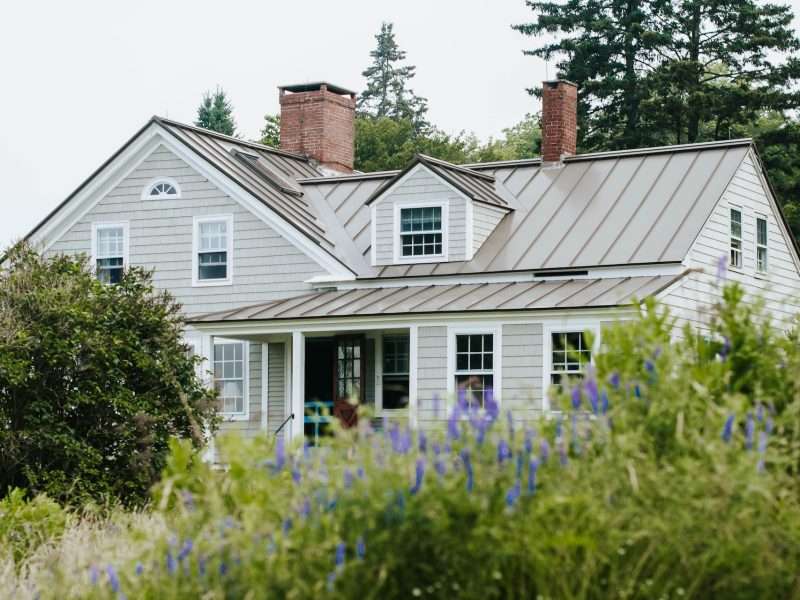


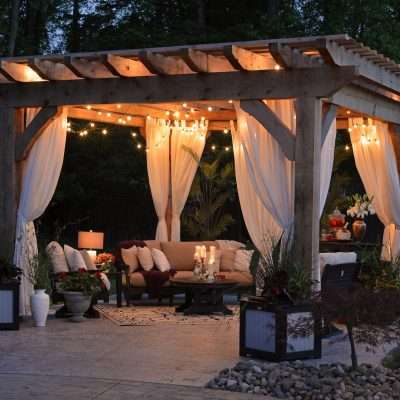
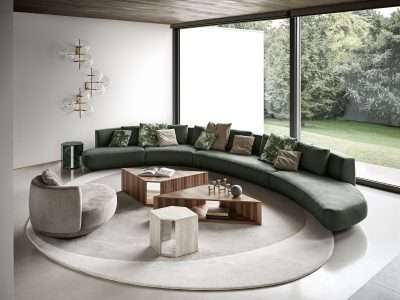

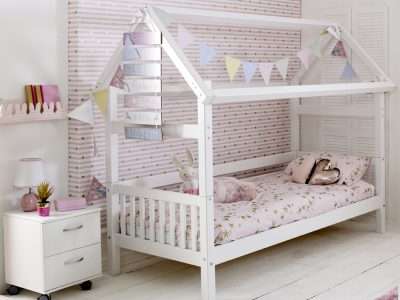
Comments